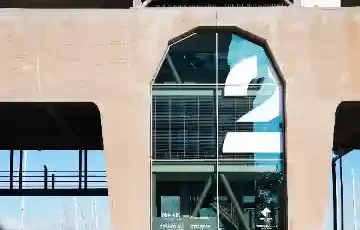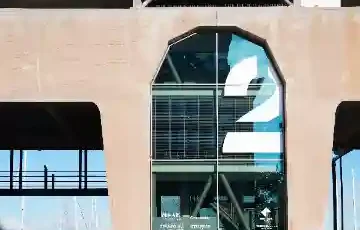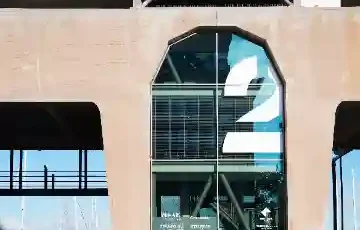Bankruptcy proceedings begin when a debtor can no longer fulfill payment obligations and are initiated at the district court. The judge appoints a trustee who manages all assets and pays creditors as much as possible according to statutory priority from proceeds of sold possessions.
The Dutch Bankruptcy Act regulates the entire procedure from application to termination. Creditors can pursue their claims through this legal route when negotiations fail. The district court determines whether the debtor is genuinely insolvent before proceeding with the bankruptcy declaration.
What are the requirements for filing bankruptcy under Dutch law?
The district court only declares a debtor bankrupt if it is summarily evident that payment has ceased and multiple creditors exist. Additionally, the applicant creditor’s claim must be sufficiently established without extensive investigation.
Creditors must demonstrate within 50 words that their claim is legally sound. The court does not conduct in-depth investigation during bankruptcy proceedings—other legal procedures are available for this purpose. Rotterdam District Court explicitly ruled that bankruptcy proceedings are unsuitable for extensive claim examination.
Requirements for a valid application:
- Demonstrable insolvency of the debtor
- Minimum of two creditors
- Sufficiently substantiated claim without counter-evidence
- No ongoing payment arrangements or debt assistance programs
If any element is missing, the judge rejects the request. Debtors can defend themselves by demonstrating ability to pay or by challenging the legal validity of the claim. A lawyer is mandatory when a creditor files for another party’s bankruptcy.
How does the application procedure work at the district court in the Netherlands?
Both the debtor and creditors can file for bankruptcy. For personal bankruptcy, the debtor uses the Self-Declaration of Bankruptcy Form, filed free of charge at the district court in their residential region. A lawyer is not necessary for this process.
After receipt, the court sends a summons for the hearing. Debtors have several options until this hearing to prevent bankruptcy. They can make payment arrangements with creditors, who may then withdraw their application. Moreover, the option exists to request suspension of payment for up to eighteen months’ deferment.
Natural persons can apply for debt restructuring through the Debt Restructuring Act for Natural Persons (Wsnp). If the court grants this, no bankruptcy declaration follows. During the hearing, debtors may present their position orally or in writing. Those unable to attend must submit written defense beforehand.
The judge assesses:
- Insolvency of the debtor
- Validity of the claim
- Presence of multiple creditors
- Any defenses or alternative solutions
After the ruling, the judge immediately appoints a trustee and a supervisory judge. The trustee assumes all decision-making authority and manages assets. Bankruptcy information appears within two working days in the Central Insolvency Register and the Chamber of Commerce Trade Register, making it publicly accessible.
What role does the trustee fulfill during bankruptcy proceedings under Dutch law?
The trustee manages all assets of the bankrupt party and attempts to generate maximum proceeds for creditors by selling possessions, terminating contracts, and collecting claims. All decision-making authority over finances and assets transfers from the debtor to the trustee.
This legal representative creates an inventory of all possessions, debts, and claims within 14 days. He thoroughly investigates the administration to gain a complete picture of the financial situation. Simultaneously, the judge can institute a cooling-off period during which creditors may not claim goods or payments.
The trustee arranges mail blocking—all correspondence goes to him first before reaching the debtor. This prevents loss of important financial information. Subscriptions for newspapers, gyms, and other services are cancelled to reduce costs. Valuable items such as art, expensive electronics, and vehicles are auctioned.
Daily necessities remain protected:
- Clothing and bedding
- Washing machines and cookware
- Tools necessary for exercising a profession
- Child benefits and alimony
The supervisory judge oversees the management and liquidation of the estate. Bankrupt parties dissatisfied with their trustee’s decisions can file a complaint with this supervisory judge through the Central Insolvency Register. In 85% of cases, the trustee operates within legal frameworks without disputes.
Do you need certainty about your legal position facing threatened bankruptcy? Specialized lawyers analyze your situation and advise on the best strategy to protect your interests.
What happens to the debtor’s income and assets in the Netherlands?
Most income flows to the trustee once bankruptcy is declared. This applies to wages, benefits, and income from self-employment. The bankrupt party receives only the exempt amount monthly for living expenses such as rent, groceries, and utilities.
The trustee calculates this amount based on the Attachment-Free Base, taking into account household composition and fixed expenses. On average, the exempt amount ranges between €1,100 and €1,400 per month for single persons. Families receive higher amounts depending on the number of children.
Ongoing attachments on wages or goods automatically stop upon bankruptcy declaration. Creditors cannot impose new attachments during bankruptcy, providing the bankrupt party some financial relief. All recovery options run exclusively through the trustee according to statutory priority.
Asset components the trustee acquires:
- Bank balances and savings accounts
- Real estate and vehicles
- Shares and investments
- Valuable movable property
- Claims against third parties
Spouses or registered partners are not automatically declared bankrupt. However, under community of property, their assets count toward the estate. Partners in marriages with prenuptial agreements retain their own assets unless they have personally guaranteed debts.
How does the verification phase and debt determination work in Dutch law?
During the verification meeting, the trustee examines all submitted claims from creditors and compiles a provisional list of recognized debts. Creditors can object to other parties’ claims within 14 days after the verification date.
The trustee invites all known creditors in writing to this meeting. They must submit their claim in writing with supporting documents such as invoices, contracts, or other evidence. Claims without adequate substantiation are not recognized.
During verification, discussions frequently arise regarding claim priority. The Bankruptcy Act establishes strict sequence for paying creditors from proceeds. Priority goes to bankruptcy costs themselves, including trustee fees and court fees starting at €127. Next follow privileged creditors such as the Tax Authority.
Statutory creditor priority:
- Bankruptcy costs (trustee, court fees)
- Employment-related debts (wage arrears)
- Social insurance and Tax Authority
- Mortgage and pledge holders (separatists)
- Concurrent creditors (ordinary trade creditors)
Concurrent creditors receive a proportional share of remaining proceeds. In practice, little remains for this category—on average, they receive only 5 to 15% of their original claim. The trustee creates a final distribution list after verification concludes.
When and how do bankruptcy proceedings end according to Dutch legislation?
Bankruptcy ends in various ways depending on circumstances. The most common scenarios are termination due to lack of assets, bankruptcy settlement, or completion of liquidation. In 60% of cases, termination due to lack of assets follows within six months.
Termination due to lack of assets occurs when the trustee determines insufficient assets exist to cover even bankruptcy costs. He requests the court for termination. After approval, all debts fully revive—creditors can again individually enforce payment through summons and attachments.
A bankruptcy settlement arises when the trustee agrees with creditors that the debtor pays a percentage of debts. Creditors vote on this during the verification meeting. With majority approval and court homologation, remaining debts are definitively discharged. This occurs in approximately 15% of all procedures.
Upon completion of liquidation, the trustee has sold all possessions and paid creditors as much as possible according to priority. He prepares a final statement and distribution list. Creditors have 10 days to object. Without objections, bankruptcy ends, but unpaid debts remain.
The fourth option is conversion to Wsnp. The debtor submits a conversion request with the trustee to the court. If the judge grants this, bankruptcy transitions to a debt restructuring program. After 18 months of Wsnp, a clean slate follows—all remaining debts are discharged. This happens in 20% of personal bankruptcies.
What are the consequences for different legal entities under Dutch law?
Liability after bankruptcy depends entirely on the business’s legal form. Entrepreneurs with legal entities such as private limited companies (BV) or public limited companies (NV) are generally not personally liable. Their private assets remain outside the bankruptcy estate unless mismanagement or personal guarantees exist.
Mismanagement occurs when directors act demonstrably improperly and this significantly contributes to bankruptcy. Examples include failing to fulfill annual accounts obligations, not paying taxes, or continuing operations when bankruptcy was evident. The trustee can then hold directors personally liable.
Sole proprietorships and general partnerships (VOF) have no separation between private and business assets. Bankruptcy automatically encompasses both business resources and private possessions. The residence, private vehicles, and personal belongings can be sold to pay creditors. In 75% of sole proprietorship bankruptcies, a substantial deficit emerges.
Partnerships involve joint and several liability. Each partner can be held liable for the entire debt by creditors. If one partner goes bankrupt, this does not automatically mean other partners are also bankrupt. However, creditors can seek recovery from all partners’ private assets collectively.
Limited partnerships (CV) distinguish managing partners and limited partners. Managing partners bear full liability, while limited partners are only liable up to their contribution. This legal form is increasingly rare due to risks for managing partners.
Contact specialized law firms for personalized legal advice on your specific situation and asset protection during financial difficulties.
What options exist to prevent bankruptcy in the Netherlands?
Entrepreneurs with payment problems can pursue several legal routes before bankruptcy occurs. Suspension of payment offers deferment for up to eighteen months. The court appoints an administrator who provides oversight while the entrepreneur attempts business restructuring.
During suspension, creditors cannot impose attachments or institute claims. This provides the entrepreneur respite to develop a restructuring plan. However, suspension succeeds in only 30% of cases—bankruptcy often follows anyway because financial problems prove too deeply rooted.
The Private Composition of Debt Act (WHOA) since 2021 offers an alternative for profitable businesses with temporary liquidity problems. The entrepreneur proposes an agreement with creditors regarding debt forgiveness or payment deferment. The crucial advantage: not all creditors need to agree.
The court can homologate the agreement if at least one class of creditors consents and the plan is reasonable. Creditors who vote against are still bound by the agreement. Therefore, the entrepreneur prevents one dissenting creditor from blocking the entire restructuring process.
Debt restructuring via Wsnp is available for natural persons with problematic debts. After 18 months, a clean slate follows—all remaining debts are discharged. The difference from bankruptcy is essential: after bankruptcy without settlement, debts remain, while Wsnp offers definitive release.
Entrepreneurs can prepare for a possible restart before bankruptcy declaration. The trustee can sell assets to a restarting enterprise, often established by the same entrepreneur. Employees retain their positions and the business remains operational, while old debts remain in the bankrupt entity.
How does appeal work against a bankruptcy declaration in Dutch law?
Debtors who disagree with their bankruptcy declaration have only eight days after the ruling to file appeal with the court of appeal. A lawyer is mandatory for this procedure due to legal complexity and short deadlines.
This deadline begins on the day of oral ruling during the hearing. Therefore, debtors must act immediately if they wish to object. The court of appeal assesses whether the district court rightfully decided on bankruptcy based on available information.
Objection offers an alternative option for debtors who were not present at the hearing and have not submitted written defense. They have 14 days from the ruling to file objection. The court then schedules a new hearing where the debtor can present their position.
During appeal or objection, bankruptcy continues normally. The trustee can sell possessions and terminate contracts unless he decides to await the outcome. This is not mandatory—in 90% of cases, the trustee proceeds immediately with operations to prevent value loss.
It is advisable to proactively inform the trustee about the appeal or objection. Some trustees choose to postpone sales until clarity exists regarding the bankruptcy’s legal validity. This prevents unnecessary damage if the court of appeal ultimately annuls the bankruptcy.
Appeal success rates depend on:
- New facts unknown during district court proceedings
- Procedural errors by the district court
- Evidence that the debtor can still pay
- Legal defects in the bankruptcy application
Courts of appeal annul only 10% of bankruptcy rulings. Most appeals fail because insolvency and multiple creditors’ existence are sufficiently demonstrated. Debtors succeed primarily when they can prove the applicant creditor’s claim is legally unsound.









